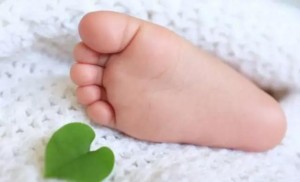
The best slippers for cold feet are made of sheepskin.
sheepskin is the perfect insulator and has been keeping people warm, dry and healthy for thousands of years.sheepskin's natural properties not only insulate, but they breathe and wick away moisture. Keeping feet dry is vital to maintaining a consistent, warm temperature in the slipper.
No other slipper material offers the benefits of natural wool when it comes to keeping feet warm. Synthetic materials like faux shearling, memory foam, and even cotton can hold onto moisture and make your feet colder. The best slippers and best house shoes for cold feet are made of wool and they will make life SO much more comfortable!
The Fall and Winter. If you have Raynauds or poor circulation, this time of year is pretty much just suffering. Great news! There is a solution! We have discovered the secret to keeping cold feet comfortable, here is the scoop:
If you’ve been buying slippers made from synthetic materials, shearling lined, sherpa or even cotton you may be tempted to ignore slippers as a potential cure for your cold feed. But here's a fact: The best house shoes for cold feet are made of wool.
Why is wool the best house slipper for cold feet? Well there are some characteristics of wool that you may not know about. In our age of technical, synthetic fabrics many people are quick to disregard wool as being too scratchy, or too sweaty or even too traditional, but nothing could be further from the truth. Wool, you see, was the original performance fabric.
Before Dryfit, before polyester, before cotton was being spun into yarn, humans made clothing out of wool. In fact, in 1700’s Europe it became illegal to export sheep as their wool was so valued and necessary to society. Today, astronauts on the International Space Station wear wool lining under their space suits. So what is so special about wool?
Wool wicks and evaporates moisture
At a molecular level, wool is animal hair that is made of keratin, a complex organic substance formed by amino acids. Different types of keratin make up everything from fingernails, to human hair to animal hooves. As a fiber, keratin has some very impressive properties. It is lightweight yet durable and can absorb up to 15% of its weight in water. This is how wool keeps your feet from getting sweaty and smelly inside a slipper. It pulls moisture away from your feet, absorbing it, then wicking it away to the outer layers to evaporate into the air.
A dry foot is a warm foot. This is why mountain climbers and hikers wear wool socks. Wool slippers with their thick, multi-layered construction are essentially wool socks on steroids. Many sporting goods companies have used wool as the inspiration for their performance fabrics, but even with all the modern technology we can, no synthetic fabric can quite match the natural wicking ability of wool.
Wool is a natural insulator
When thick wool felt is created using water and friction, air pockets are formed which contribute to its already impressive insulating properties. Did you know that one of the greatest insulators is air? Why is that? Here’s a quick science lesson review: it’s because air cannot efficiently transfer heat or energy. When warm air gets trapped, it tends to stay warm. Due to the porous fiber structure of the wool, and the air pockets created in the felting process, a wool slipper becomes a lean, mean, insulating machine!
Post time: Mar-19-2021

